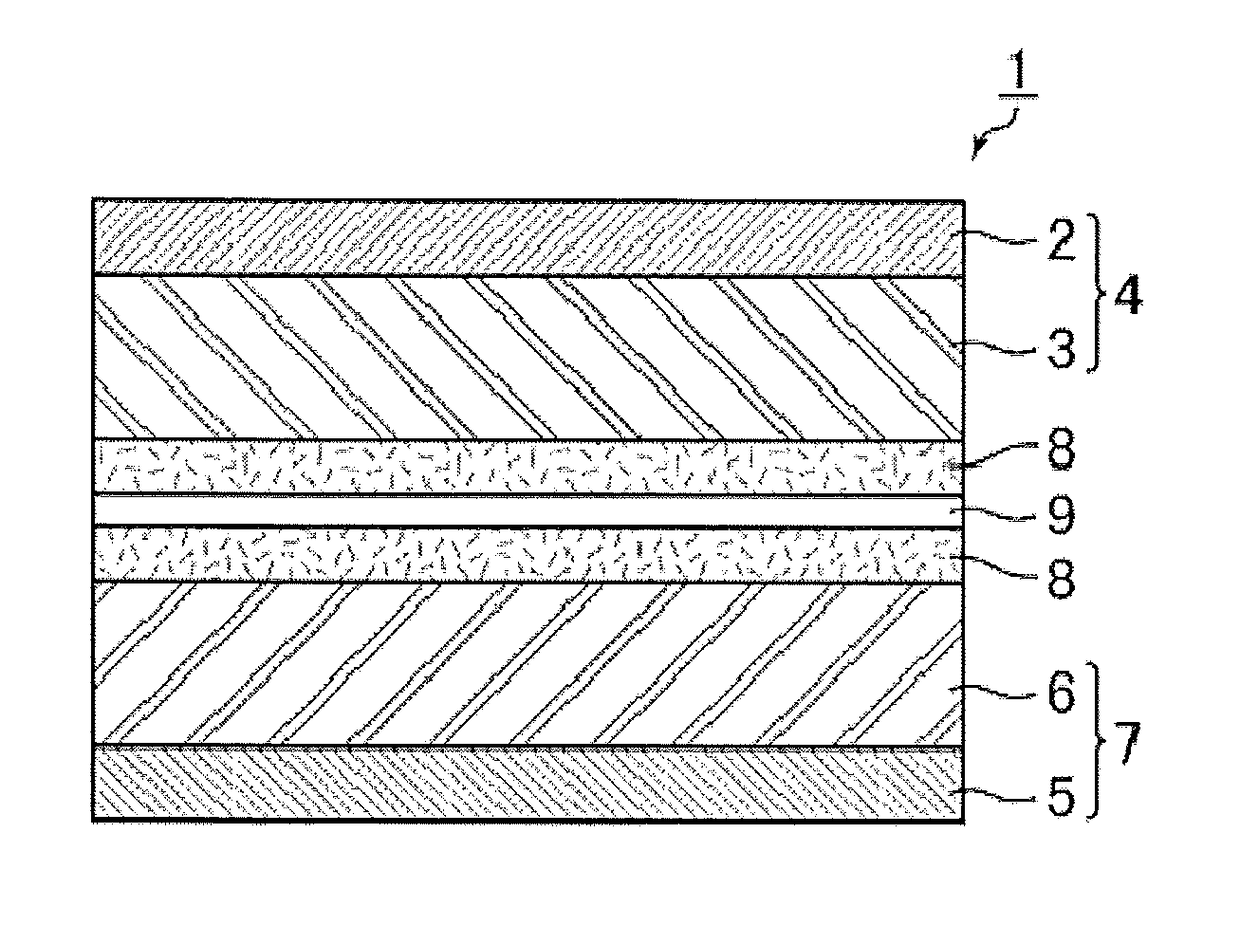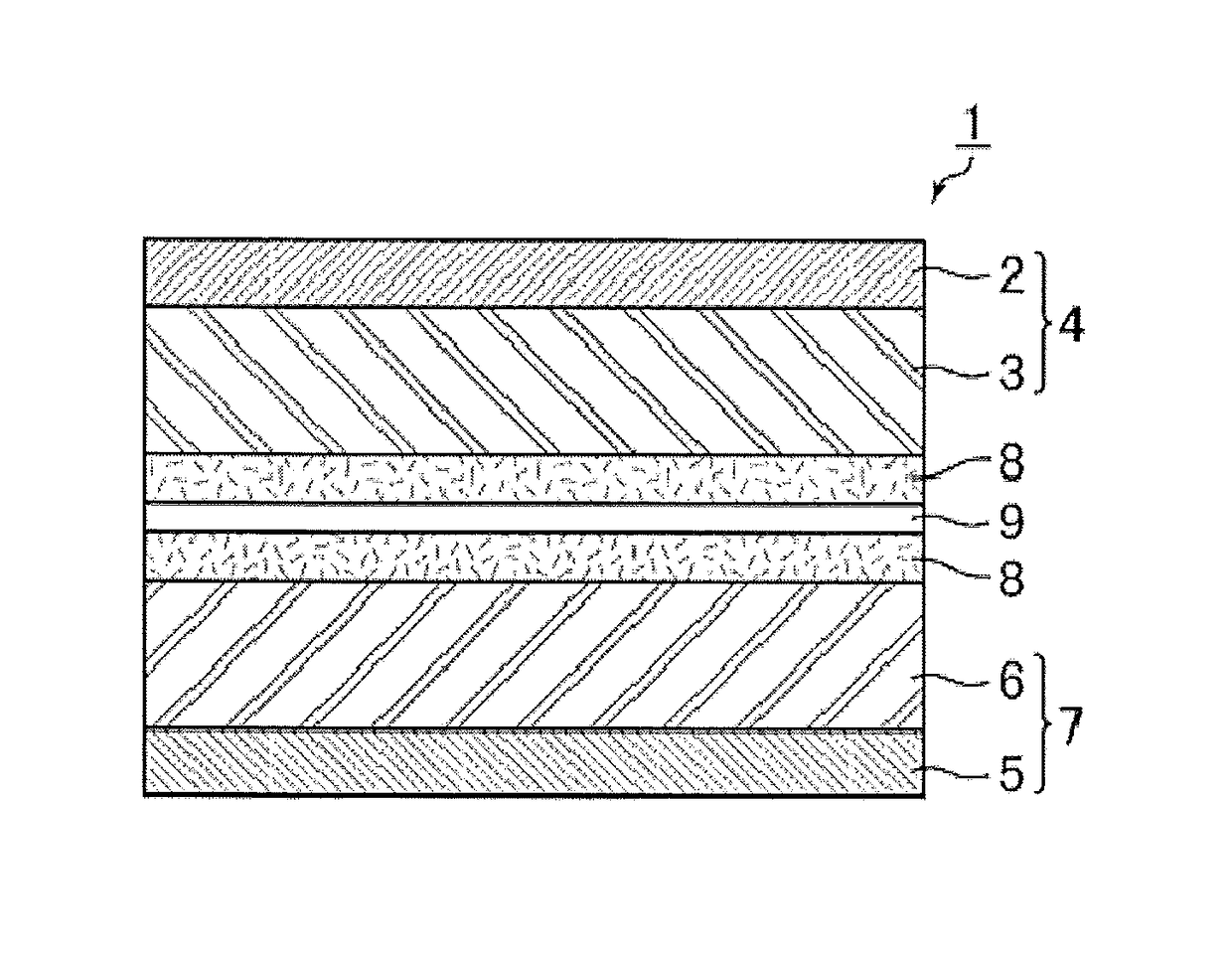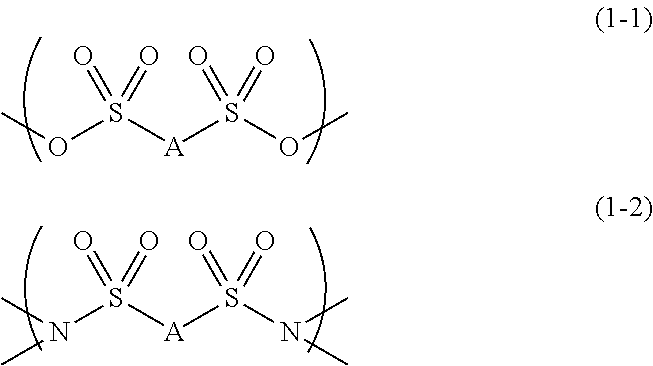Additive for nonaqueous electrolyte, nonaqueous electrolyte, and electricity storage device
a technology of nonaqueous electrolyte and additive, which is applied in the direction of electrolytic capacitors, group 5/15 element organic compounds, electrochemical generators, etc., can solve the problems of reducing the intercalation efficiency of lithium ions and the battery capacity after, and achieve excellent storage stability, improve the cell performance of electrical storage devices, and improve the effect of cell performan
- Summary
- Abstract
- Description
- Claims
- Application Information
AI Technical Summary
Benefits of technology
Problems solved by technology
Method used
Image
Examples
example 1
Preparation of methanedisulfonic acid bis(phenylamide) (compound 1)
[0286]A 200-mL four-necked flask equipped with a stirrer, a condenser, a thermometer, and a dropping funnel was charged with N-phenyl amine (10.2 g) (0.11 mol) and 1,2-dimethoxyethane (70.0 g), and a solution of methanedisulfonyl chloride (10.7 g) (0.05 mol) dissolved in 1,2-dimethoxyethane (20.0 g) was added dropwise thereto over 20 minutes while maintaining the temperature at 0° C. Subsequently, while maintaining the temperature at 0° C., a solution of triethylamine (10.6 g) (0.10 mol) dissolved in 1,2-dimethoxyethane (20.0 g) was added dropwise over 1 hour, followed by stirring over night at the same temperature.
[0287]After the completion of the reaction, the reaction solution was filtered, and toluene (100.0 g) and water (50.0 g) were added to the filtrate. Then, an organic phase was separated from the aqueous phase, and part of the solvent was removed from the organic phase by reduced pressure distillation at 25...
example 2
Preparation of methanedisulfonic acid bis(methyl phenyl amide) (compound 2)
[0290]A 200-mL four-necked flask equipped with a stirrer, a condenser, a thermometer, and a dropping funnel was charged with N,N-methylphenyl amine (11.8 g) (0.11 mol) and 1,2-dimethoxyethane (70.0 g), and a solution of methanedisulfonyl chloride (10.7 g) (0.05 mol) dissolved in 1,2-dimethoxyethane (20.0 g) was added dropwise thereto over 20 minutes while maintaining the temperature at 0° C. Subsequently, while maintaining the temperature at 0° C., a solution of triethylamine (10.6 g) (0.10 mol) dissolved in 1,2-dimethoxyethane (20.0 g) was added dropwise over 1 hour, followed by stirring over night at the same temperature.
[0291]After the completion of the reaction, the reaction solution was filtered, and toluene (100.0 g) and water (50.0 g) were added to the filtrate. Then, an organic phase was separated from the aqueous phase, and part of the solvent was removed from the organic phase by reduced pressure di...
example 3
Preparation of methanedisulfonic acid bis(benzyl methyl amide) (compound 3)
[0294]A 200-mL four-necked flask equipped with a stirrer, a condenser, a thermometer, and a dropping funnel was charged with N,N-benzylmethylamine (13.3 g) (0.11 mol) and 1,2-dimethoxyethane (70.0 g), and a solution of methanedisulfonyl chloride (10.7 g) (0.05 mol) dissolved in 1,2-dimethoxyethane (20.0 g) was added dropwise thereto over 20 minutes while maintaining the temperature at 0° C. Subsequently, while maintaining the temperature at 0° C., a solution of triethylamine (10.6 g) (0.10 mol) dissolved in 1,2-dimethoxyethane (20.0 g) was added dropwise over 1 hour, followed by stirring over night at the same temperature.
[0295]After the completion of the reaction, the reaction solution was filtered, and toluene (100.0 g) and water (50.0 g) were added to the filtrate. Then, an organic phase was separated from the aqueous phase, and the solvent was removed from the organic phase by reduced pressure distillatio...
PUM
| Property | Measurement | Unit |
|---|---|---|
| heat resistance | aaaaa | aaaaa |
| heat resistance | aaaaa | aaaaa |
| LUMO energy | aaaaa | aaaaa |
Abstract
Description
Claims
Application Information
 Login to View More
Login to View More - R&D Engineer
- R&D Manager
- IP Professional
- Industry Leading Data Capabilities
- Powerful AI technology
- Patent DNA Extraction
Browse by: Latest US Patents, China's latest patents, Technical Efficacy Thesaurus, Application Domain, Technology Topic, Popular Technical Reports.
© 2024 PatSnap. All rights reserved.Legal|Privacy policy|Modern Slavery Act Transparency Statement|Sitemap|About US| Contact US: help@patsnap.com










